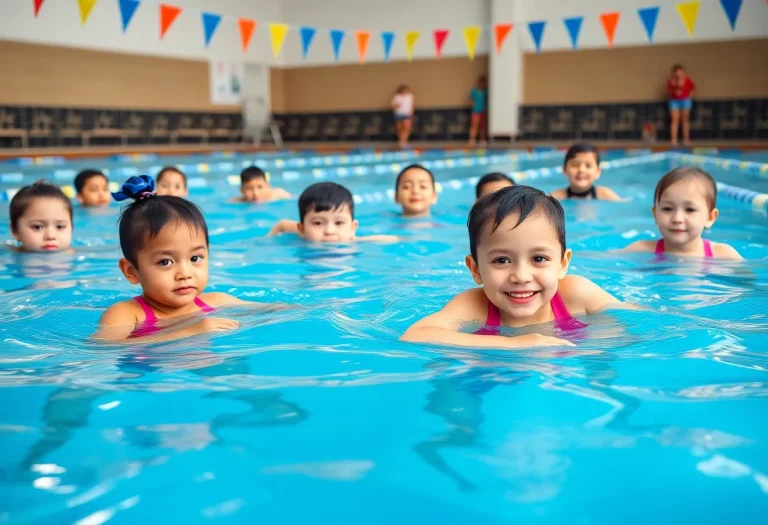News Summary
New statistics show that nearly half of primary school children in Australia struggle with essential swimming skills, raising significant concerns for parents. With 48% of Year 6 students unable to swim 50 metres and 39% of Year 10 students failing to meet basic swimming benchmarks, the urgency for effective swimming education is critical. The disruption to swimming lesson participation due to the COVID pandemic and rising drowning rates heighten the need for accessibility to swimming lessons, ensuring children’s safety in water is a priority.
Alarming Stats Reveal Swimming Skills Crisis Among Aussie Kids
In a worrying trend that’s causing quite a bit of concern for parents across the nation, new statistics reveal that nearly half of primary school children in Australia are lacking essential swimming skills. According to new data, 48% of Year 6 students can’t swim even 50 metres or tread water for just two minutes. That’s a staggering figure when you think about the importance of water safety, especially in a country surrounded by water.
Things aren’t looking much better for older students either. The figures show that 39% of Year 10 students also don’t meet basic swimming benchmarks. This issue is about more than just being able to do a few laps at the pool; these swimming and water safety skills are crucial not just for kicking back and enjoying time in the water, but also as vital tools in preventing drownings.
Catching Up After COVID
One of the biggest reasons for these concerning statistics appears to be the slowdown in swimming lesson participation since the pandemic. It’s estimated that around 100,000 children in late primary school are expected not to return to swimming lessons before moving on to high school. Given that the right time to start formal swimming lessons is between the ages of five and seven, every day we let pass without lessons is a lost opportunity to improve vital safety skills.
Interestingly, some research suggests that older children might actually learn these swimming skills more quickly than younger ones. This means that while starting lessons early is ideal, they can still pick up the skills later on, potentially requiring fewer lessons in the long run.
Regular Lessons Make the Difference
A 2018 study highlighted an important fact: children who attended at least ten swimming lessons over the span of eight weeks were the ones who acquired the most skills. Regular attendance is key, but unfortunately, many families face hurdles that make accessing these lessons difficult. Costs, the lack of nearby pools, and the shortage of qualified instructors, especially in low socio-economic and rural areas, mean that not every child gets the chance to learn.
In some regions, schools are stepping up to help. For instance, schools in New South Wales often provide two weeks of daily swimming lessons for Year 2 students. In Tasmania, students in Years 3, 4, and 5 are required to participate in swimming lessons. However, schools are running into their own issues, such as staffing shortages and a crowded curriculum, leading to around 31% of surveyed schools not being able to provide swimming education.
Rising Drowning Rates
The urgency surrounding these statistics becomes even more pronounced when you consider the rising drowning rates in Australia. Recent reports indicate a 16% increase in fatal drownings in 2024 compared to the ten-year average, tragically resulting in 104 lives lost over one summer alone. This grim statistic serves as a stark reminder of the importance of swimming education and water safety.
Healthy Habits for Swimming Skills
Parents are encouraged to keep their children enrolled in swimming lessons throughout the cold months to ensure they maintain their skills. Research supports the idea that consistent exposure to swimming skills drastically improves water safety competence and overall physical development.
If regular lessons aren’t feasible during chilly months, parents can look for alternatives such as holiday intensive swimming courses to help children catch up on missed instruction. It’s vital that as a community, we ensure our children have access to lifesaving swimming skills. After all, swimming isn’t just a fun summer activity; it’s an essential life skill that can save lives.
Deeper Dive: News & Info About This Topic
LIVE BALL Resources
High School Baseball and Softball Seasons Kick Off
High School Baseball and Softball Take Center Stage in Houma-Thibodaux
Saline High School Dominates MHSAA Boys Swimming Championship
Local Swimmer Mary Kate Kupsky Shines at State Championships
High School Sports Results from March 16, 2025
Local Swimmers Shine at 2025 MHSAA State Championships
State College Swimmers Shine at PIAA Championships
Cal Poly Shocks Community with Swimming and Diving Program Cuts
Lancaster High School Girls Break National Relay Record
Ohio High School Basketball Championships Highlight Purcell Marian and Winton Woods
Additional Resources
- The Conversation: If Your Tween or Teen Doesn’t Know How to Swim, It’s Not Too Late for Lessons
- Wikipedia: Swimming
- The Conversation: Thinking of Quitting Your Child’s Swimming Lessons Over Winter? Read This First
- Google Search: Swimming Lessons
- Education HQ: Lack of School-Age Swimming Skills Risks Us Becoming Nation of Waders
- Google Scholar: Swimming Education
- The Conversation: Why Should My Child Take Swimming Lessons and What Do They Need to Know?
- Encyclopedia Britannica: Swimming Lessons
- Livestrong: Swimming Statistics
- Google News: Swimming Crisis



